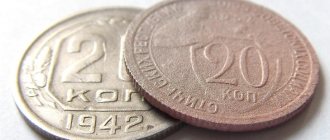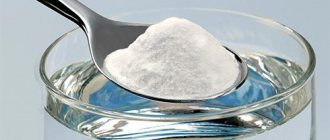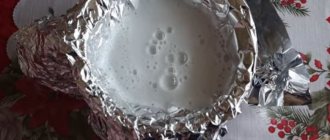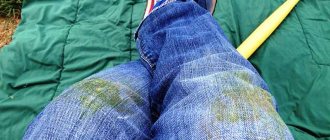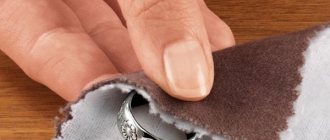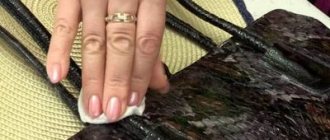10/29/201602/15/2017 Maria Ivanova
Most people prefer to clean silver with ammonia. This method is effective and simple, which allows it to be done at home. Due to its chemical properties, ammonia perfectly removes the oxidizing film from the metal, ensuring the safety of the silver item.
Silver is a precious metal, due to its beautiful shine, unique jewelry appears: unique earrings, beautiful chains and attractive rings.
Silver has a peculiar mysticism and mystery. When this metal begins to darken, an even more attractive texture appears, which adds an “antique” effect to the products.
But it often happens that silver darkens more than we want. Is it possible to restore the original appearance of metal?
- 1 Why does silver begin to darken?
- 2 How can you clean silver at home?
- 3 Instructions for cleaning silver with ammonia
- 4 Alternative options for cleaning silver using ammonia
- 5 What precautions should you take when cleaning silver with ammonia?
Why does silver darken?
Unlike gold, silver turns black faster: if it is enough to clean gold once a year or even less often, in order for silver items to be shiny and sparkling, they must be cleaned of plaque at least once every two months (the less often this is done, the thicker the plaque will be and darker color).
The lower the quality of the silver, the more effort is required to clean it, so when purchasing, it is advisable to give preference to 925 sterling silver (the purest silver is 999 sterling silver, but it is not used in manufacturing because it is very fragile and brittle).
The main reason that affects the darkening of silver and gold is the presence of various impurities in the metal, primarily copper, which oxidize when interacting with other substances, which manifests itself in the form of a black coating. For example, if we talk about silver jewelry, then when worn, copper reacts with sulfur, which is part of sweat, as a result of which silver sulfide appears in the form of black crystals on the surface of the silver.
Silver jewelry also often darkens in people who have problems with stomach acidity. For this reason, jewelry with a smooth surface is most often darkened, since it comes into close contact with the skin, providing maximum contact.
Another reason why silver darkens is the high sulfur content in the environment: the higher its concentration, the faster the product darkens. Can cause darkening of silver and its storage in conditions of high humidity.
Tips for owners of silver products
The surface of silver remains clean longer and you will have to clean it less often if you follow simple recommendations:
- Be sure to wipe the dishes and cutlery dry after washing; paper prevents the appearance of darkening; wrap it in it without tying it with an elastic band;
- when taking a shower, bathing, when visiting a sauna, bathhouse, when doing housework and applying cosmetics, remove jewelry;
- the juice of vegetables and fruits (onions, carrots, beets, red and black currants) oxidizes silver, so it is recommended to remove the rings when cooking;
- regular hair conditioner will prevent oxidation - apply it with a cotton pad or napkin, leave for three minutes, rinse and wipe dry;
- the best place to store silver is a closed box (casket) lined with fabric, a bag, and rarely used items are recommended to be stored wrapped in foil;
- silver coins are stored separately from each other in special albums and boxes;
- Do not use aggressive cleaning agents, hard sponges or brushes.
A silver product will serve you for a long time if you take care of it and follow the operating rules, taking into account the characteristics of the metal.
How do you like the article?
Ammonia and silver
Ammonia effectively removes blackness from silver and gold due to its ability to react with any chemical oxidizing agent, converting it into ammonium salts, which allows it to be a very good solvent. At the same time, its peculiarity is that ammonia does not affect gold and silver when removing plaque, which allows it to be used without the risk of damaging the precious metal.
The only point that needs to be taken into account when cleaning is that you cannot soak silver and gold in the same solution, as they will react, resulting in yellow silver and white gold. It is not recommended to use ammonia to clean gold-plated silver, as well as items with pearls. For products that contain other precious stones, when preparing the solution, you need to reduce the amount of ammonia.
Rules for using ammonia
Ammonia (ammonia) is a chemical and should be used in accordance with the rules.
What not to do:
- use hard cloths and sponges - the abrasive may scratch the metal surface;
- clean jewelry with pearls - pearls darken from ammonia, losing their quality;
- use a solution with a high concentration of ammonia if the jewelry contains a gemstone (use a weak solution of 250 ml of water and 5 drops of ammonia).
Precautionary measures
When working with ammonia, given its characteristics as an excellent solvent and the presence of a pungent odor, we must not forget about precautions: the skin of the hands should in no case come into contact with the solution, since ammonia, being a solvent, can corrode the skin.
If the mixture accidentally ends up on it or on mucous membranes, you should immediately rinse the affected area with plenty of water, and then consult a doctor. Therefore, when cleaning the product, you must remember to wear rubber gloves; to remove the soaked product from the dish, you can use tweezers.
If it is necessary to clean tableware from blackness, it is advisable to replace ammonia with an alternative agent. If the product is poorly washed, the remains of ammonia may end up in the body and cause poisoning or burns.
One of the disadvantages of this method is the pungent odor, which is so dangerous that if you do not take precautions, inhaling the vapors can cause poisoning. Therefore, bending your head over an open bottle of ammonia, as well as breathing in vapors, is strictly not recommended. Fortunately, the unpleasant odor dissipates very quickly, so in order for the unpleasant odor to disappear as quickly as possible, cleaning should be carried out in a well-ventilated area.
Rules for caring for silver
To prevent silver from darkening, the following rules should be followed:
- Put on jewelry only after the cosmetic oil or cream has been completely absorbed.
- Avoid storing silver in high humidity conditions.
- Remove jewelry when swimming, especially in salt water.
- It is advisable to store the products in a dry place; it is best to wrap them in foil.
- Remove chains and rings before dishwashing or hand washing.
- To prevent silver from oxidizing, it is recommended to place aluminum foil in the box.
- You can put chalk in the storage box to help maintain the shine.
- After removal, it is recommended to wipe the jewelry with a soft, dry cloth.
It is also important to periodically clean silver from plaque.
If you follow these recommendations, you can wear the jewelry longer, because it will turn black less.
Preparing the product for cleaning
To clean silver or gold with ammonia, you may need:
- Toothbrush;
- sponge, wool or flannel fabric (under no circumstances should you use abrasive substances or hard brushes to clean silver: they can scratch it and ruin the appearance of the product);
- a container for the solution (it should be borne in mind that it cannot subsequently be used for cooking);
- paper napkins;
- rubber gloves and tweezers.
The cleaning method largely depends on the product: if you need to clean, for example, a chain, you should take into account that it consists of many links, which are not easy to get to from all sides, so the best option would be to soak the product. Before you start cleaning the product with ammonia, it is advisable to soak it in a soap solution for a while: most of the blackness will come off and it will be easier to clean the precious metal.
What not to clean silver
You should not use detergents and cleaners aimed at dissolving rust and plaque (Domestos, Pemolux and others): acid and alkali can harm silver.
Do not use hard toothbrushes or abrasive sponges. Ammonia should not be used when cleaning blackened metal, since if you are too diligent, the coating may simply come off.
By choosing the wrong method for cleaning silver, it is easy to ruin your jewelry, so you need to approach this process extremely thoughtfully and carefully.
Correct technique
When starting to clean silver with ammonia, you need to prepare a solution by diluting 1 tbsp. l. alcohol in 10 tbsp. l. water. After this, put silver items in the liquid and leave for at least half an hour (soaking time depends on how firmly the blackness is ingrained into the precious metal, but no more than an hour). When the time is up, wear gloves, remove the product from the solution and wipe with dry wipes.
If the coating is not strong, to get rid of the blackness, you can moisten a woolen or flannel cloth with ammonia (it is advisable not to bend over the bottle because of the pungent odor). After this, rub the blackened surface well.
You can rid silver items of blackness by mixing ammonia, hydrogen peroxide, baby liquid soap and water in equal proportions. After this, put the silver in the solution and wait the time necessary for the blackness to pass. Dry the cleaned product with napkins and polish with a woolen cloth.
In case of very severe contamination, you can use a pure ammonia solution. To do this, put the silver in the product for fifteen minutes, then remove it, rinse and dry. When cleaning silver using this method, you must act carefully and do not lean over the product, so as not to be poisoned by the smell of ammonia.
Other cleaning methods
You can restore the shine of silver using other methods, for example, soap solutions or grated potatoes. If the decoration does not contain stones, use lemon juice.
Fresh silver stains can be removed with toothpaste without adding ammonia. Simply squeeze the paste onto a sponge and work the product in a circular motion, then rinse. Paste has an advantage over powder: its particles are larger and harder than toothpastes, which means that when using tooth powder, you risk scratching the product.
An old recipe: place foil in potato broth and place silver objects there for several hours. After such cleaning, the silver will shine like new. Leave the decoration in lemon juice mixed with the same amount of warm water for half an hour. Then rinse the item and wipe dry.
Ammonia and tooth powder
To make cleaning silver with ammonia more effective, you can prepare a solution with tooth powder. At the same time, you need to act carefully here, since there are recipes that cannot be used for products with stones, but there are also those that clean both silver and the elements decorating them well.
To prepare a solution for cleaning silver items with stones, you need to mix ammonia and tooth powder in equal quantities. After this, moisten flannel or woolen material in the mixture and clean the product. When the silver is cleared of blackness, rinse the product under running water, dry and polish.
There is another effective method that allows you to remove old plaque, however, this method is not suitable for cleaning products with stones:
- 5 tbsp. l. warm water;
- 1 tbsp. l. tooth powder (sold at the pharmacy);
- 2 tbsp. l. ammonia.
After mixing the components, moisten the sponge into the mixture and clean the product. When the silver is clean, rinse with water and wipe dry. If it is not possible to get tooth powder, you can replace it with toothpaste.
To clean heavily soiled items, you need to apply toothpaste to a toothbrush, thoroughly clean the jewelry on all sides, and then place the silver in a ten percent ammonia solution for several minutes. Rinse the cleaned product under running water, dry well with paper towels and polish with wool, suede or flannel cloth.
Alternative options for cleaning silver using ammonia
If you want to restore the former beauty of your silver jewelry or the previous options did not suit you, then there is an alternative in the form of a combination of ammonia and tooth powder at home. In order to clean silver in this way, you need:
- make a solution containing 5 tablespoons of warm water, 1 tablespoon of tooth powder and 2 tablespoons of ammonia;
- Wet the sponge and clean your jewelry, then rinse the silver in water and wipe dry. It is prohibited to clean products with stones in this way.
You can also mix ammonia with hydrogen peroxide and baby liquid soap. All ingredients are mixed in equal parts, after which water is added to them.
Silver items should lie in this solution until all the dirt is removed from them. After this procedure, you need to dry and polish the silver using a woolen cloth.
If your silver has enamel or stones, then there is a method that will require ammonia and tooth powder.
The components are also mixed in equal proportions and the surface of the darkened areas is wiped using suede or wool. Don't forget to polish and dry your silver.
How to clean silver with stones
You can clean silver rings with stones in a jewelry store or at home. You should focus on the density of the stones. Aquamarine, emerald and sapphire can be cleaned with washing powder; laundry soap will help remove grease and dirt from malachite, moonstone, opal and turquoise. Silver earrings with ruby or garnet stones should not be immersed in hot water. It is important to clean jewelry with inserts very carefully and carefully: do not damage the insert itself or loosen the fastenings. Products containing amber, coral or pearls should be washed with lukewarm water and soap. Aggressive cleaning agents can destroy the structure of the stone.
Causes of darkening of silver
Under what conditions and why does silver turn black? The essence of the process is that argentum actively reacts with sulfur. And in the air, in addition to oxygen, there is a small amount of hydrogen sulfide. Therefore, over time, the products turn black, combining with hydrogen sulfide and forming a film called silver sulfide.
Silver ring "Snake" turned black
The following factors provoke blackening of silver:
- Low quality product. Most likely, copper was added as an alloy, and it accelerates the process of oxidation and blackening.
- Constantly worn on the body. Dust, dirt, skin particles, and sweat stick to the jewelry, which can affect the color change of the product.
- High air humidity or constant exposure of jewelry to water.
- Contact with cosmetics or medications that contain small amounts of sulfur.
But not all products form this layer. The fact is that recently a lot of jewelry has been produced that is coated with a layer of rhodium. This metal prevents sulfur and silver from coming into contact, protecting the product from blackening.
Or there are also oxidized or blackened silver jewelry. Such a dark shade is natural for them, so you don’t need to clean them so carefully so as not to remove the top layer.
Well, in ordinary products you can simply get rid of this film by cleaning your home decoration. If jewelry cleaning products are available in jewelry workshops, it is better to take them there. They are guaranteed to clean the product without scratching or causing harm. This is done using special gels that do not damage the surface of the jewelry.
How to clean gold with ammonia
Before you start cleaning, you need to study the nature of the contamination. Accumulations of dust that appear periodically or the reason lies in the oxidation of the metal. For simple contamination, water and soap are enough to make a solution. It will remove dirt and dust, and for more complex ones you can use this recipe:
- Pour the concentrated ammonia solution into any container.
- Then place the contaminated gold items there.
- The cleaning time depends on the degree and nature of the contamination and is chosen independently.
- In case of heavy contamination, it is necessary to soak the products in the solution overnight. In the morning, take out your jewelry, rinse and let dry.
- Then polish them with cloth or flannel. Polishing will remove any remaining dirt and plaque. After it, the products will shine.
To keep the need to clean gold jewelry to a minimum, you need to follow the basics of care. Remove products before using a shower or sauna, or using cream or cosmetics. Cleaning and regular maintenance of your gold will help keep your jewelry in its original condition.
What causes gold to become contaminated?
Why does a once beautiful, shining product become dull and dirty? It's all about the impurities that are used to create jewelry.
Gold in its pure form is a very soft and abrasion-resistant material, the positive property of which is its resistance to corrosion and chemical influences of the environment.
Jewelry made from such material can be damaged simply by squeezing it in your hand. That is why various alloys are added to gold - metals, thanks to which the alloy becomes stronger and slightly changes its color. The ligature transfers some of its properties to the alloy and jewelers have the opportunity to make beautiful, designer, complex jewelry that amazes the eye with an abundance of complex and subtle elements.
The ligature not only gives different shades to gold, but also contributes to its rapid contamination.
Depending on the type of gold, various metals are added. To get yellow gold, just add silver and copper. Manganese, nickel, palladium or platinum makes gold white. The latter is the most expensive version of ligature. Copper gives gold its red color. The higher the copper content in the alloy, the brighter the color. Green gold contains silver or rubidium. Unusual black gold can be made by coating the surface with rhodium or ruthenium, or by oxidizing an alloy of gold, cobalt and chromium.
It is these additives that come into chemical contact with the environment, simultaneously changing the appearance of the jewelry. In addition to the chemical threat of oxidation, there is a threat of contamination of the product. Gold becomes covered with sweat and sebum, gradually losing its original magnificent appearance and shine.
Before you start cleaning, you need to understand that none of the home cleaning methods guarantees a 100% result.
Using a home cleaning method, you need to prepare for unpredictable results. If the product is as expensive as memory, it is better to rely on specialists.
Any cleaning product is designed for alloys, not for stones, so a product that is absolutely harmless to gold can negatively affect precious and semi-precious stones.
Many owners of jewelry do not understand their true composition. White gold can contain both platinum and nickel. Externally, the two alloys are practically indistinguishable for those who do not have professional skills. Platinum is much more resistant than nickel, which can be damaged by aggressive cleaning agents.
It is necessary to carefully clean gold jewelry, taking care not to damage the precious and semi-precious stones.
Any beautiful product has places that are hard to reach for cleaning. Cleaning your home may not completely remove dirt from some parts of the product. If it is fundamentally important to return the jewelry to its original appearance, it is best to contact a professional who can correct all the shortcomings that have appeared over time.
When starting to clean jewelry at home, the owner is fully responsible for the consequences of any recipes read. That is, he takes full responsibility for possible damage to a possibly important and expensive thing.
Any methods that involve scrubbing dirt from a product using a hard brush or powder will inevitably damage the jewelry. The original appearance returns, but not for long. These methods help get rid of the outer layer of dirt and at the same time erase the top layer of alloy from the jewelry, which protects the product from damage and corrosion.
Folk recipes
Previously, when special compositions for cleaning jewelry were in short supply, people actively used improvised means. Recipes with ammonia were considered the most effective. The pharmaceutical product was used in its pure form and mixed with other solvents for better effect.
With hydrogen peroxide
Peroxide affects the oxidative process with the help of oxygen. Together with ammonia, it actively dissolves plaque on precious jewelry.
- Pour a glass of water into a bowl, add 2 tbsp. spoons of ammonia and hydrogen peroxide, mix.
- Dip the jewelry into the solution and wait 15 minutes.
- After the specified time, arm yourself with a soft cloth, preferably lint-free, and rub the products.
- Rinse with water.
With "Fairy"
Dishwashing detergent acts on the greasy traces left on the product after contact with human skin. Together with ammonia, Fairy and its analogues effectively remove plaque and rid silver of blackness.
- Add 1 teaspoon of Fairy and 2 tbsp to a glass of water. spoons of ammonia.
- Immerse the products in the solution for 20 minutes.
- Remove and rub with a piece of cloth.
- Rinse with water.
With tooth powder
This recipe is suitable for cleaning products with old plaque, but without stones. Tooth powder, like ammonia, can be found at the pharmacy. It acts as an abrasive, removes plaque and polishes the surface.
How to clean silver from plaque at home:
- Mix 5 tbsp in a glass. spoons of water, 1 tbsp. spoon of tooth powder, 2 tbsp. spoons of ammonia.
- Dip a cloth into the solution and clean the items.
- Rinse off any remaining composition with water.

